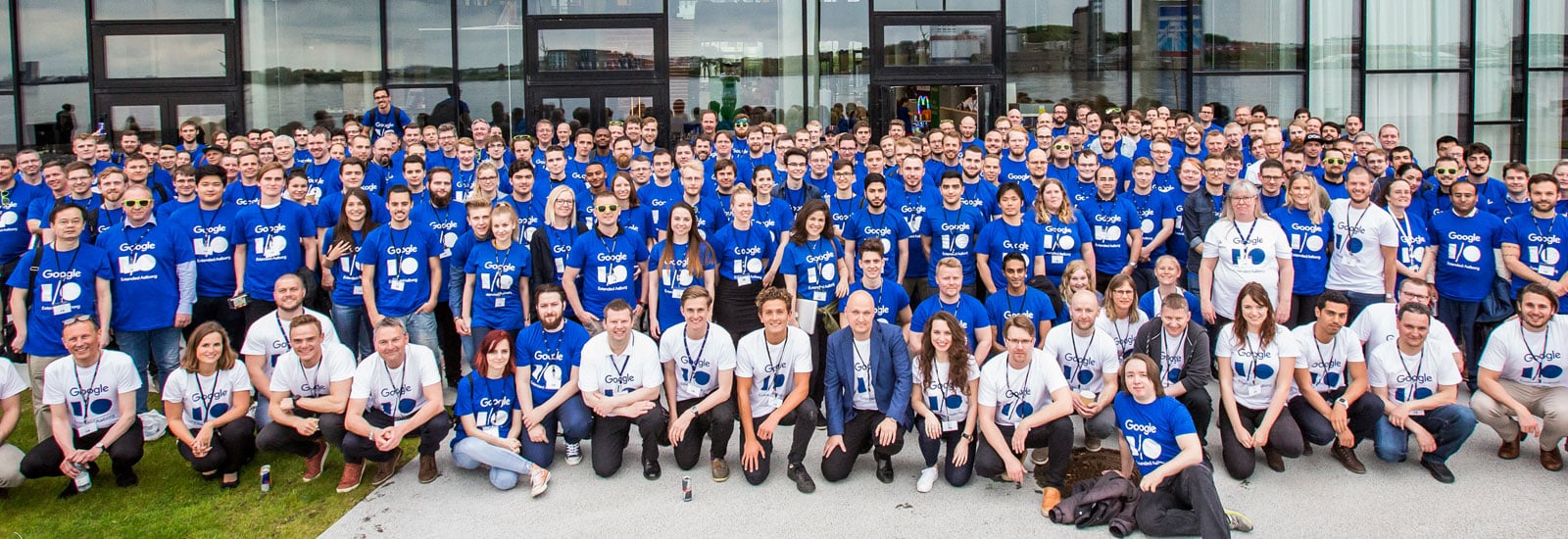Last year, Google I/O Extended Aalborg was the largest I/O Extended event in Northern Europe. But this year, we took it to new heights as the largest Google I/O Extended event in the whole of Europe.
With almost 300 attendees, everyone from students, professionals and other like-minded people all passionate about Google tuned in to be among the first to get the latest news on groundbreaking innovations and new product launches.
This years, Google I/O Extended started out with a Google Code Lab where 80 developers were tasked with a case revolving around mapping the New York City Subway using the Go programming language, Google App Engine and Google Maps JavaScript API.
After an inspirational opening speech by Pablo de la Horra, Head of Maps Partners in Northern and Central Europe at Google, participants were anxiously awaiting the keynote speakers in the livestream from the Shoreline Amphitheatre in Mountain View, California.
HERE ARE SOME HIGHLIGHTS FROM GOOGLE I/O 2017
It was a thrilled CEO who stepped onto the stage to announce that as of this week, Google crossed a new milestone with two billion monthly active Android devices. Led by CEO Sundar Pichai, executives from Google laid out the future for the company’s plans for Android, Google Home, virtual reality and Google Assistant.
Google Assistant
It became obvious that Google Assistant should no longer risk being left behind from the similar intelligent personal assistants like Alexa, Siri and Cortana.
Google Assistant is moving towards a new frontier in persona assistants as it can now see and understand the world around you. Google Assistant can analyze your surroundings using the smartphone camera with the Google’s latest technology, Google Lens.
Google Lens enables Assistant to analyze the world around you and display relevant content on your screen. When you are taking a stroll in the park and sees a beautiful flower in the gardens, you can use Google Lens from your Assistant to identify what species the flower is simply by pointing your smartphone at it. At its core, Google Lens can understand what you are looking at and help you use that information for more.
But what is the most useful thing about Google Lens? When you point Lens at a Wi-Fi login on a router, Assistant will automatically use that information to connect you to the network.
Finally, Google Assistant will no longer be exclusive for Android users. It will be available as a standalone app for iPhone and iPad with many of the same functions as on the Android OS.
Google Home
Google Home is a voice-controlled speaker with Google Assistant built in it. Ask a question and you will get an answer. Besides already supporting multiple users with individual voice recognition, but now Google Home turns into a phone.
All Home Owners in the United States and Canada will in the coming months be able to place free calls within these countries. It is by default set to your private number, but you can tie it to any phone number of your choice. And just like Google Home support multiple users, it will also support multiple phones as part of the voice recognition setup.
On top of that, Home’s Bluetooth speaker will be opened up so that you can pair your devices with it just like with any other speaker. Google Home will also be able to display its answer on a connected screen. You can ask for directions to a location and the directions will be instantly displayed in Google Maps on your phone.
Google Photos
Machine learning is becoming part of Google Photos. The app will now recommend who to share your photos with based on facial recognition. They also introduce Shared Libraries that allow families or friends to collect images on a single folder. The final touch is that Google said that in the future, Photos will be able to automatically remove unwanted items in your photos.
Android O and Android Go
The upcoming mobile operating system Android O will be launched for preview. Android O is still in its early days, so do not install on your main device. Furthermore, Android Go is Google’s bet on how to reach the next billion users with an a version of Android OS built for entry-level devices.
Will Google dominate artificial intelligence?
The future of Google depends on AI and more specifically machine learning. Sundar Pichai announced a the next-generation Tensor Processing Unit designed for machine learning. This new chip makes building AI on any Google platform incredibly efficient. Google’s new TPU chip is optimised for working with TensorFlow. This can provide the company with a unique competitive advantage, if they can own both the hardware and software used by leading AI researchers. It will truly be exciting to see the upcoming advancements and breakthroughs that the future will yield in machine learning and AI.
May 23, 2017



.png)